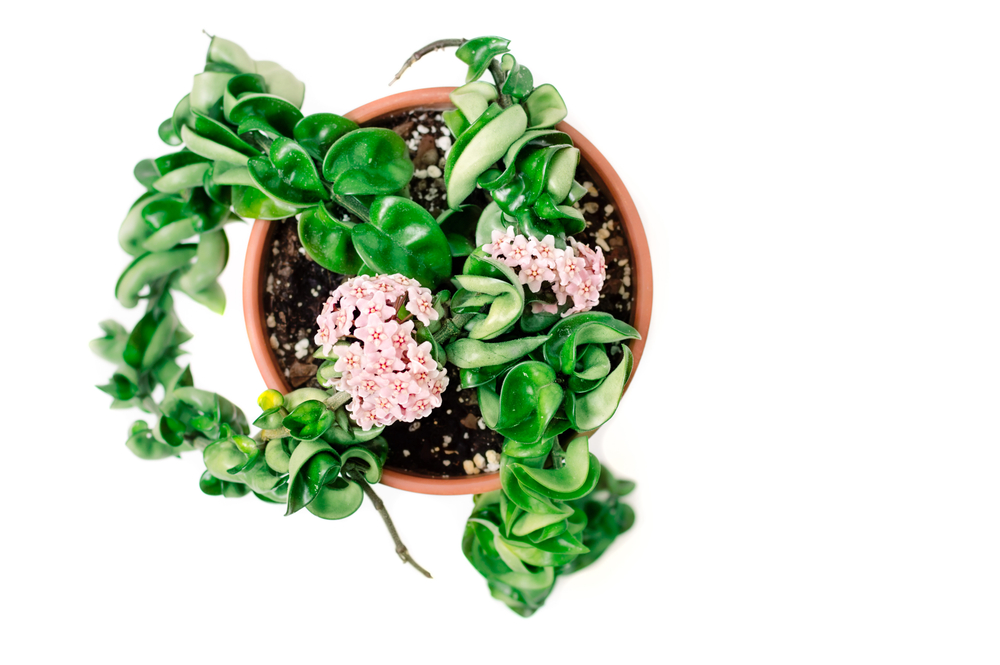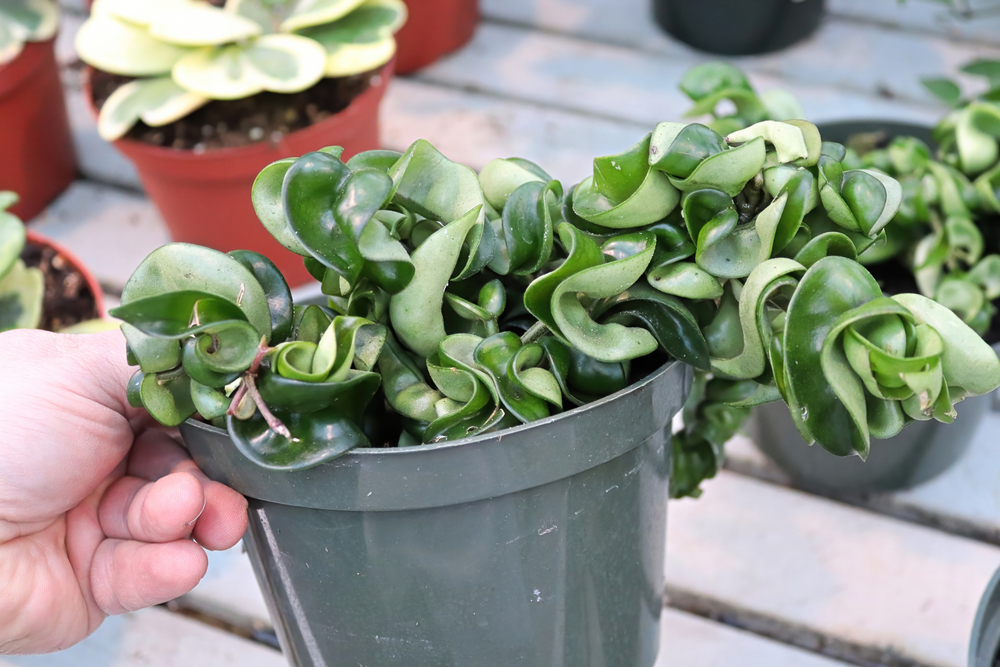Collecting plants is an addicting hobby and one that can take up a lot of your time once you get enough plants in your home. The most nerve-wracking aspect of bringing new plants into your home is learning what that new plant needs to thrive. A unique plant that will draw you in with its crinkly leaves is the hoya compacta. You won’t be able to resist this curly little plant, so here is everything you need to know to ensure this plant lives a long, happy life in your collection.

What is a Hoya compacta?
The hoya compacta, hoya carnosa compacta, is an epiphytic evergreen native to East Asia and Australia. Epiphytic means it grows on another plant, such as a tree. It’s a slow-growing plant that needs very little attention, so it’s great for beginners! It has dark green leaves and comes in a variegated variety with white or pink variegation. The fleshy curly leaves have a waxy and glossy appearance and hang down or vine up in a thick rope-like manner, giving it its nickname Hindu Rope Plant. It also goes by Porcelain Flower, Krinkle Kurl, or wax plant. The hoya compacta are ideal for hanging pots or letting them hang down the side of a cabinet or ledge.
To get this plant to bloom, you will have to give it extra special attention, but to allow this plant to thrive in your home, its care needs are simple and easy.
How to care for a Hoya compacta
While this plant might look exotic, don’t let its fancy looks fool you. It’s an easy-to-care-for plant that requires very little attention. You could leave for two weeks and come back to a happy plant. So here is how to manage the hoya compacta.
Water
The hoya compacta likes its soil to dry out completely between waterings. It will also give you a warning if the plant is getting too dry. Having a ritual where you walk around and check your plants every day will ensure you notice slight changes and catch things before they turn bad. For example, the skin on the leaves of the hoya compacta will start to wrinkle like fingers when they’re in the bath or pool for too long. That’s a sign that the plant desperately wants to be watered.
When watering the plant, be sure to let the water soak the soil thoroughly until the water is dripping out of the bottom of the pot. Then let it drip dry before placing it back into its tray.
Light
The Krinkle Kurl plant likes bright indirect light; it can survive in low light conditions, but the plant will not be its healthiest. Find a corner of the home that’s bright all day long but doesn’t get too much direct sunlight.
Food
The hoya will want to be fed monthly with a balanced and water-soluble fertilizer that you can easily find at any department store, garden center, or even online.
Temperature
The average temperature of our homes is around 65 to 75 degrees. This is perfect for the hoya, so you won’t have to worry about keeping this plant warm enough. However, you’ll want to avoid drafty windows and doors, and don’t place this plant near a vent where they’ll have dry air blown on them all the time.
Humidity
The hoya compacta are native to rainforests of Asia and Australia, which means it loves humidity. Don’t be dismayed if you don’t have a humidifier. Although this plant would thrive in 50 to 60 percent humidity, it will be happy in 40 percent, which is about the average in our homes. If you notice the plant drying out more during the winter months, you can try to mist it every morning or invest in a humidifier to be sure your plant is happy.

Toxicity
Thankfully, this gorgeous plant is not toxic to humans, cats, or dogs, so you can safely put this plant within reach and not have to worry about it hurting your furry or non-furry babies. However, this plant doesn’t do well when its roots are disturbed. So if you have a curious child or pet that might knock it over and out of its pot, you might want to put it out of reach anyway.
Common issues
The most common issues hoya compacta owners run into are mealybugs, aphids, and spider mites. The folds of the leaves make it easy for these pests to hide, so you’ll likely encounter these nasty little bugs at some point while owning this plant. Apply an all-natural pesticide like neem oil or buy a pesticide from the garden center to get rid of them.
Additional care
Like most hoyas, the porcelain flower plant hates its roots to be disturbed. The easiest way to kill your hoya compacta is by repotting it too soon after bringing it home or messing with the roots too aggressively. This will put the plant into shock very quickly. So be sure to leave the plant along for a good month or so before repotting it, and make sure the plant needs to be repotted before you do so. Hoya do not mind being a bit root bound, so it won’t hurt them if you leave them longer than you would other houseplants.
Don’t mess with the roots, let it dry out between waterings, and find a nice draft-free and bright corner of your home for this beautiful plant.


